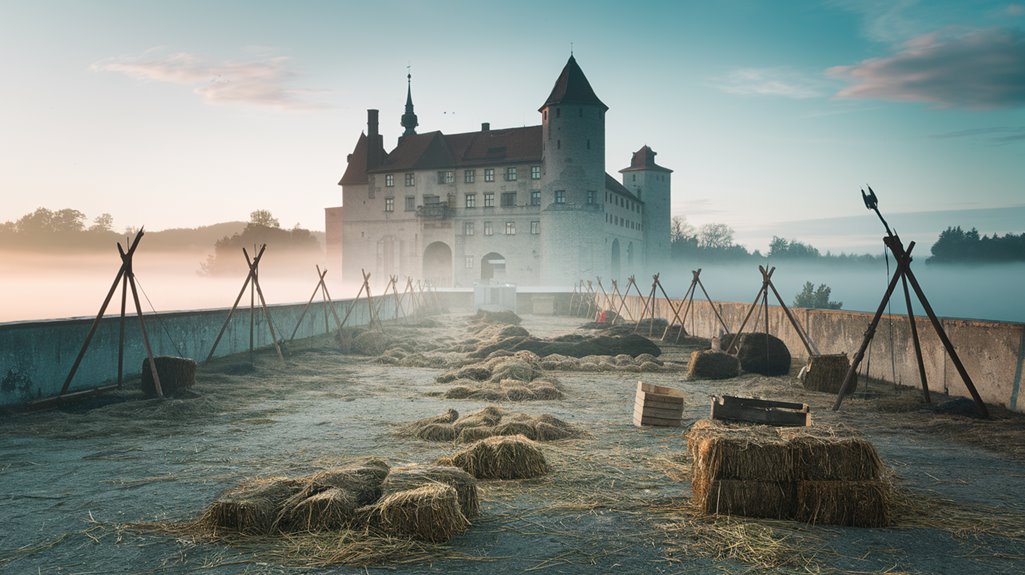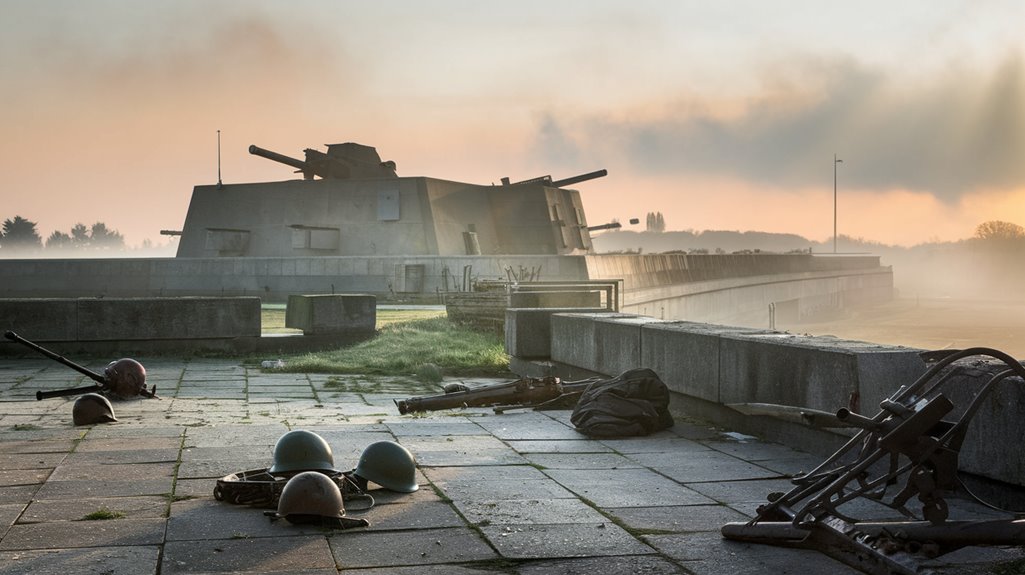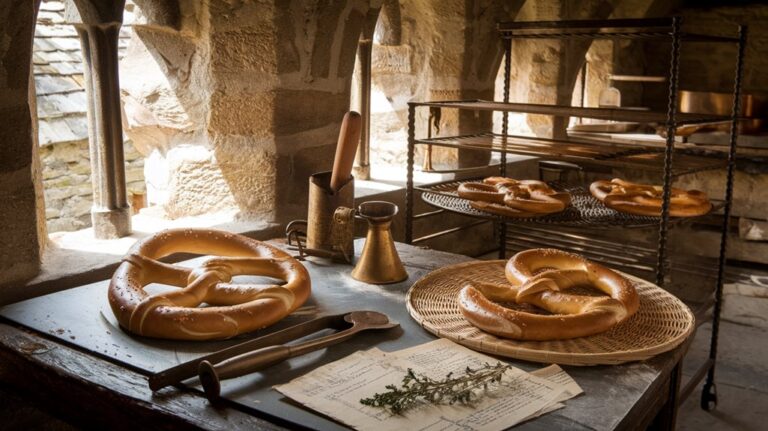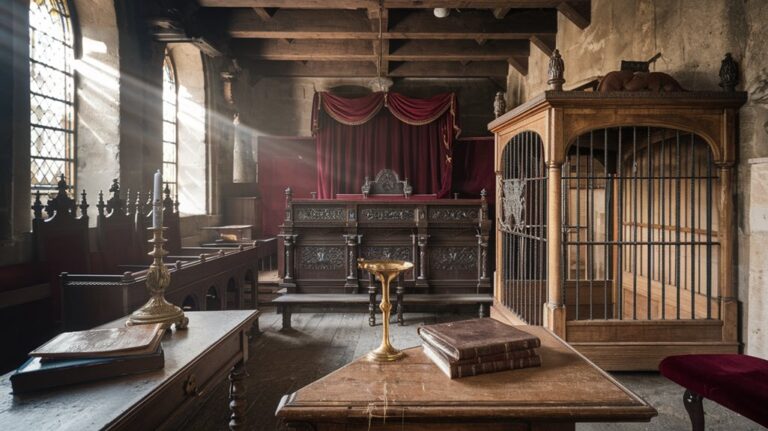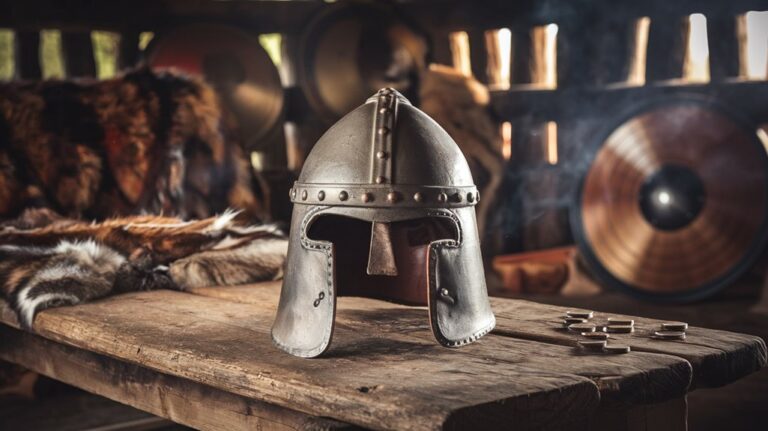History’s Bravest Last Stand You’ve Never Heard About
You've probably heard of the 300 Spartans at Thermopylae, but there's another last stand that deserves just as much recognition. In 1566, a small fortress in modern-day Hungary became the stage for an extraordinary act of defiance when 4,300 defenders faced off against 50,000 Ottoman troops. What happened next would shape European history and demonstrate how a handful of determined soldiers can alter the course of an empire. The tale of Szigetvár isn't just about numbers—it's about choices made when all hope seems lost.
The Forgotten Heroes of Szigetvár
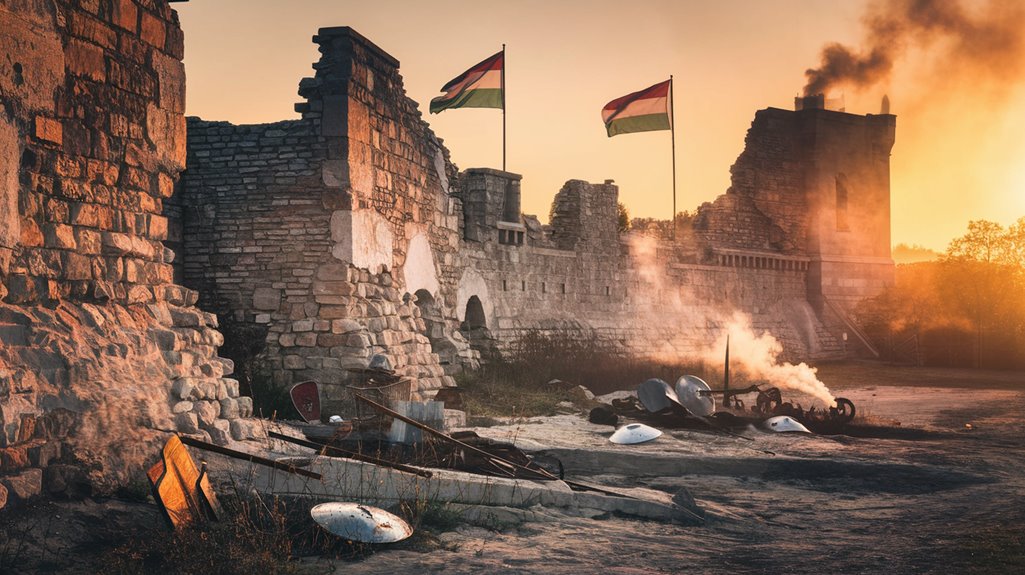
While many military historians focus on famous battles like Thermopylae, the 1566 Siege of Szigetvár stands as one of history's most remarkable last stands.
Under Zrinski's leadership, just 2,300 Croatian and Hungarian soldiers, along with 2,000 civilians, faced off against Sultan Suleiman's massive Ottoman force of 50,000 troops. Before the siege, Zrinski had used collected tax revenue to strengthen the fortress defenses.
The Ottoman strategy seemed unstoppable: they built trenches, positioned artillery batteries, and systematically bombarded the fortress.
Yet Zrinski's defenders held out for over a month, inflicting devastating casualties on their attackers. The defenders made their last heroic choice to set the fort ablaze rather than surrender to the enemy.
When the walls finally crumbled on September 5th, Zrinski didn't surrender. Instead, he led 600 remaining troops in a final, desperate charge.
Though they perished, their sacrifice cost the Ottomans up to 30,000 men and delayed their advance toward Vienna.
A David vs. Goliath Battle in 1566
The term "David vs. Goliath" has often been misapplied to historical battles, and you might be surprised to learn that no documented last stand in 1566 actually fits this underdog narrative.
While the year saw significant conflicts, including the Turkish siege of Szigetvár, none were specifically characterized as David vs. Goliath encounters. Much like the Marion Rangers militia, inexperienced soldiers often found their romantic notions of warfare quickly dispelled by harsh realities.
The metaphorical significance of David vs. Goliath remains powerful, though, as evidenced by Renaissance artist Daniele da Volterra's masterful two-sided painting at the Louvre. The work was originally credited to Michelangelo until scholars properly identified its creator.
His oil-on-slate artwork captures the biblical confrontation from multiple angles, showcasing both the front and back views of the figures.
Today, we continue using this metaphor across various fields to describe situations where perceived underdogs triumph against overwhelming odds, though it's important to separate historical fact from embellished retellings.
Military Tactics That Changed History
Throughout history's most pivotal battles, revolutionary military tactics have fundamentally reshaped warfare and human conflict.
The tactical evolution from ancient times to modern warfare showcases humanity's endless drive for strategic innovations. Storm troopers and infiltration were groundbreaking developments that helped overcome the stalemate of trench warfare. The Greeks demonstrated this innovative spirit when they used the wooden horse deception to finally breach Troy's defenses after a decade-long siege.
You'll find these game-changing developments particularly fascinating:
- Hannibal's double envelopment at Cannae became so influential that it's still studied in military academies worldwide.
- Brusilov's breakthrough tactics ended trench warfare's dominance and laid groundwork for Blitzkrieg.
- Alexander's Gaugamela maneuver demonstrated how superior tactics could overcome overwhelming odds.
- Vietnam-era innovations in airmobility and riverine warfare revolutionized modern combat.
From Zizka's wagon fortresses to Manstein's lightning-fast armored assaults, these strategic innovations didn't just win battles – they transformed how future generations would approach warfare, proving that tactical brilliance often matters more than sheer numbers.
The Human Cost of Defiance
Standing against insurmountable odds has exacted devastating human costs across history's most memorable last stands.
You'll find that human resilience shines brightest in battles like Rezang La, where 114 of 120 Indian soldiers gave their lives protecting essential airfields.
The Warsaw Ghetto Uprising's toll was particularly brutal, with 7,000 immediate deaths and 22,000 sent to death camps, yet their sacrifice remembered stands as a reflection of unwavering courage.
Even the American Revolution's statistics tell a sobering tale: 6,800 Americans died in action, with another 17,000 lost to disease.
The Civil War would later demonstrate an even greater toll on American lives, with two percent perished representing a loss equivalent to six million people in today's population.
While these last stands often ended in military defeat, they've transformed into powerful symbols of determination.
Like many authors who choose to document these stories, the process of capturing such historic moments requires shifting focus entirely from shorter formats to comprehensive book projects.
You're witnessing more than just casualty numbers – these are stories of people who chose defiance over surrender, regardless of the ultimate cost.
Legacy Beyond the Battlefield
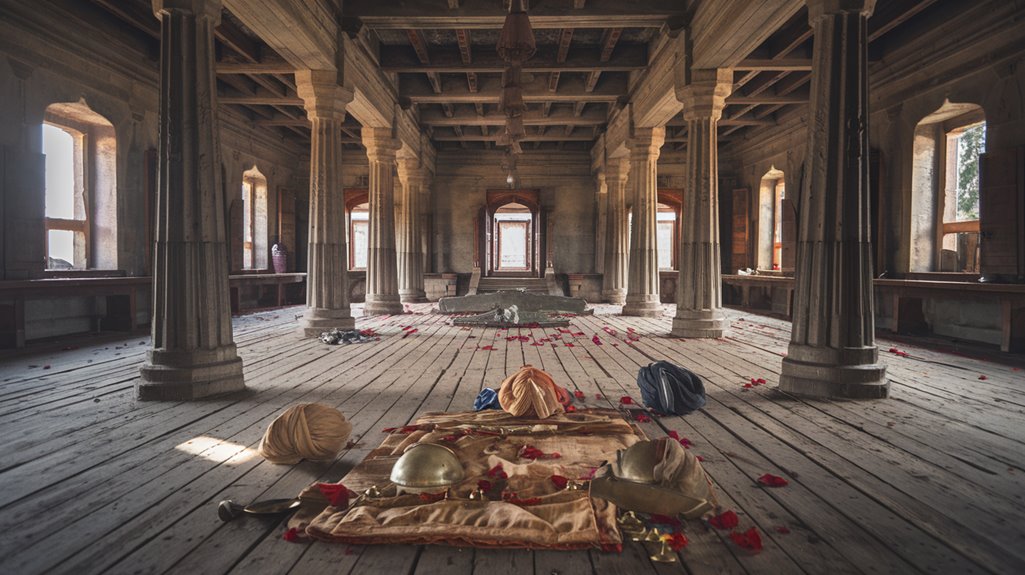
Legacy extends far beyond the smoke-filled horizons of history's last stands, shaping cultural identities and national consciousness for generations.
You'll find these battles woven into cultural narratives through art, literature, and education, creating lasting impressions that define societies. Similar to how social sharing amplifies modern stories, these historical accounts spread through generations.
The psychological impact of these conflicts reverberates through time in ways you mightn't expect:
- Veterans and civilians carry emotional scars that affect multiple generations
- Communities develop shared memories that strengthen social bonds
- Educational institutions preserve and teach these stories to inspire future generations
- Museums and memorials serve as tangible connections to past sacrifices
When you visit these historical sites or participate in commemorative events, you're not just observing history—you're part of an ongoing legacy that shapes our understanding of courage, sacrifice, and human resilience. Today's veteran homelessness crisis demonstrates how the aftermath of battle continues to challenge society long after the fighting ends.
Why This Battle Still Matters Today
The Battle of Monocacy's impact continues to shape modern military strategy and national defense thinking. When you examine this significant engagement, you'll find that its strategic lessons remain relevant today, particularly in understanding how a smaller force can effectively delay a larger enemy to protect essential objectives. Lew Wallace's 5,800 troops proved that a numerically inferior force could successfully delay a much larger army through tactical positioning.
 overwhelming Japanese forces at Kohima and Imphal, you can see its influence in modern military doctrine, where the concept of defensive delay tactics is still taught and practiced. The battle demonstrates how protecting a capital city requires both immediate tactical responses and long-term strategic planning.
overwhelming Japanese forces at Kohima and Imphal, you can see its influence in modern military doctrine, where the concept of defensive delay tactics is still taught and practiced. The battle demonstrates how protecting a capital city requires both immediate tactical responses and long-term strategic planning.
The cultural impact extends beyond military circles – it's a reflection of how seemingly minor engagements can have outsized effects on historical outcomes. Today's military planners still study this battle to understand how resourcefulness, timing, and strategic positioning can overcome numerical disadvantages.

